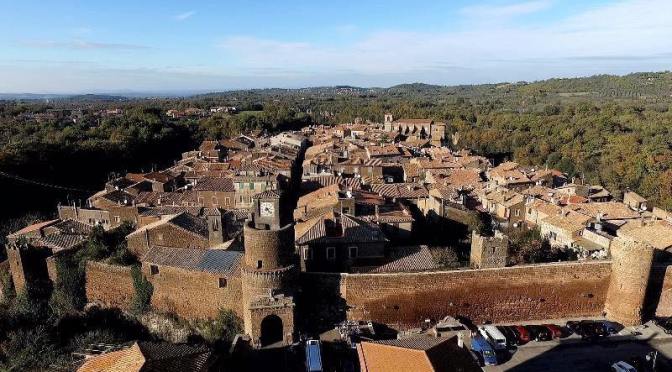Barbarano Romano is a comune in the Province of Viterbo in the Italian region Latium, located about 50 kilometres northwest of Rome and about 20 kilometres south of Viterbo. Barbarano Romano borders the following municipalities: Blera, Capranica, Vejano, Vetralla, Villa San Giovanni in Tuscia.
Video timeline: 0:00 – [Brief Intro] 2:05 – [Tour begins] 2:28 – [*Roman Gate*] 7:50 – [*Church of St.Angel*] 12:44 – [Via Roma] 13:54 – [Largo di Porta Canale] 17:30 – [*Municipal Palace*] 18:28 – [*Church of St.Maria Assunta*] 26:00 – [Panormaa on the countryside] 26:30 – [Back into the town] 30:42 – [*Church of the Cross*] 33:00 – [Back into the town] 39:54 – [Via Garibaldi] 42:23 – [*City Walls*]
The town consists of a first nucleus probably dating back to the 10th century, to which are added various buildings, from the 13th to the 17th century. It constitutes an example of a medieval village, with a main central road flanked by two secondary parallels, stretched on the wedge between two gorges and closed by walls with quadrilateral open-gorge towers dating back to 14th century, further lined by a wall towards the end of the 15th century with the addition of circular towers. The volcanic hill on which the town stands was probably the seat of a village from the Ancient Bronze Age in prehistoric times, as attested by the numerous artefacts identified at the foot of the acrocoro. However, news of a permanent settlement only dates back to the Middle Ages. Almost at the end of the main street, Via Vittorio Emanuele, until 1930 stood a pentagonal tower that was left over from a Longobard fortress, known as Desiderio – the last Lombard King who around 771 fortified Viterbo and the nearby villages to counter the Franks of Charlemagne. An original marble plaque from 1280 – located at the entrance to the main church of S. Maria Assunta – indicates that it was built in 1280, during the vacant seat of the papacy following the death of Pope Nicholas III Orsini. Barbarano was therefore part of the Longobard Roman Duchy which, following the donation of Liutprando in 728, had then become a possession of the Church in the eighth century. Feud of the Anguillara family in the 14th century, then it passed to the Orsini and finally to the Borgias in the 15th century.

